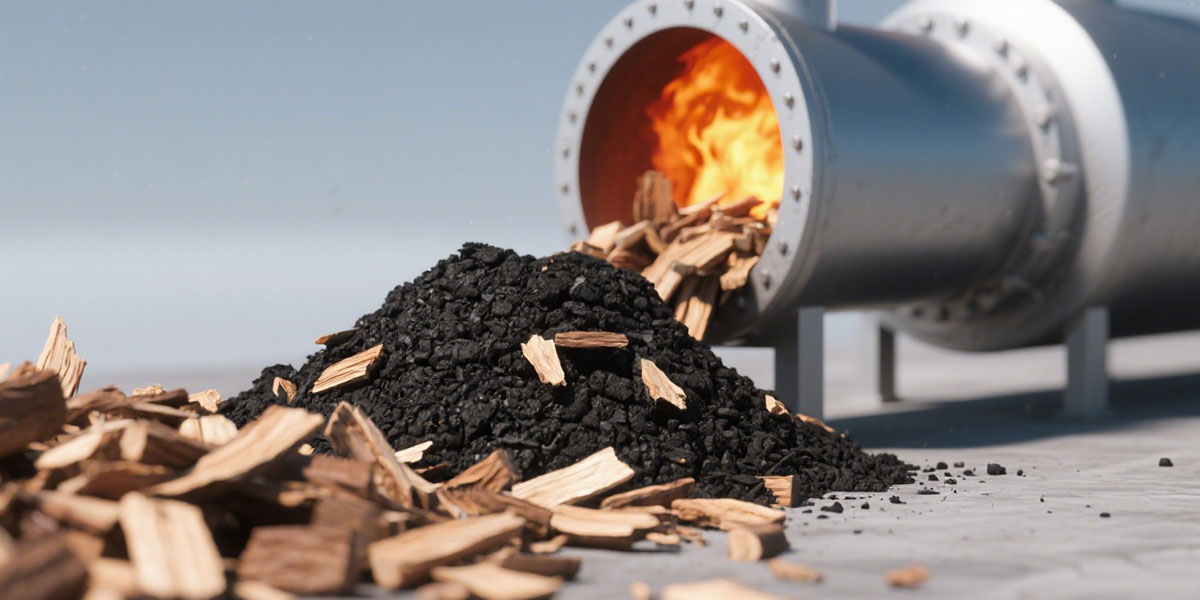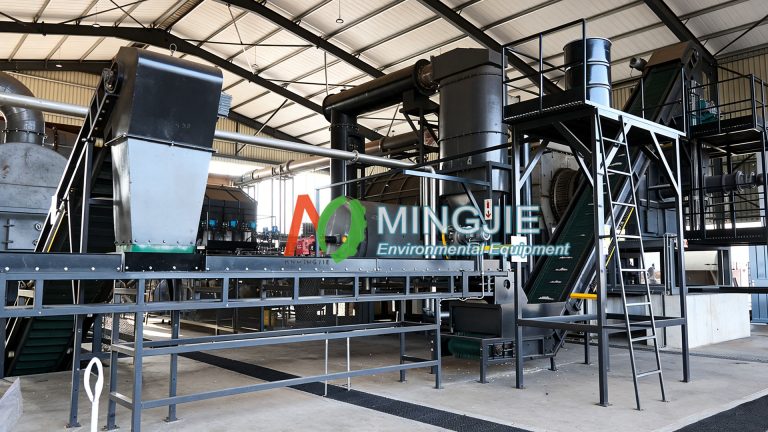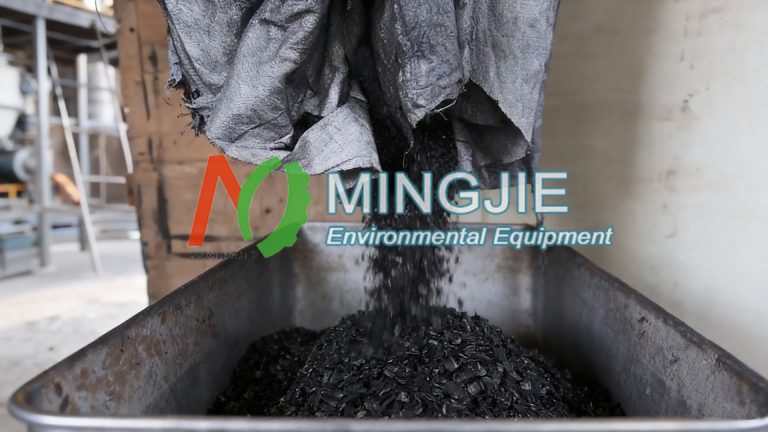As a common byproduct of the wood processing industry, wood chips have long been considered a low-cost fuel or simply waste. However, pyrolysis plants convert waste biomass into products such as biochar, bio-oil, and syngas through precise temperature control in an oxygen-free or low-oxygen environment. Pyrolysis of wood chips provides a sustainable solution for energy supply, agricultural improvement, and industrial production.
Against the backdrop of increasingly urgent global energy transitions and environmental protection needs, pyrolysis of wood chips is becoming a key link between forestry waste and clean energy.
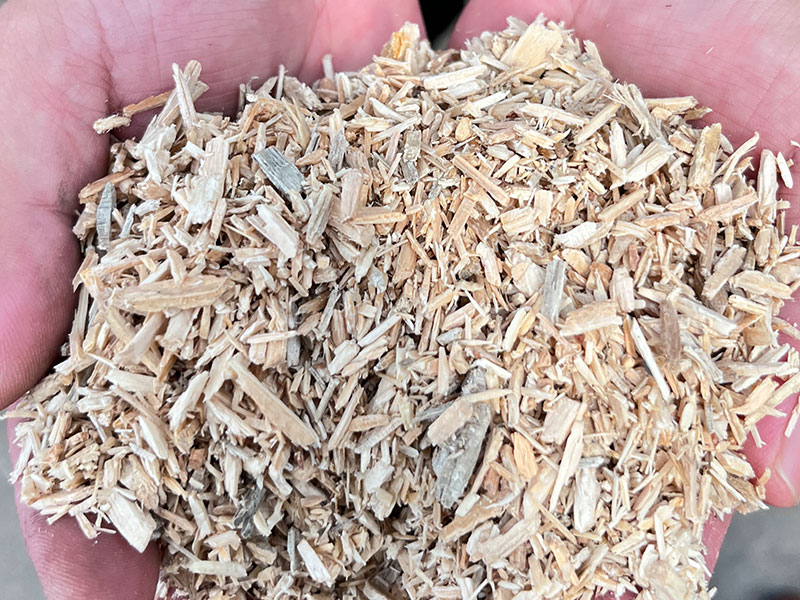
Pyrolysis of Wood Chips
The physical properties of wood chips directly determine pyrolysis efficiency. Smaller particle size and greater surface area lead to more complete pyrolysis. However, the moisture content must be reduced to below 15% beforehand. Otherwise, excess water will consume heat.
In the pyrolysis process of wood chips, the heating rate determines the resulting pyrolysis products. Slow pyrolysis (heating rate <10°C/min) prolongs the reaction time to fully decompose volatiles. Biochar yields can reach 30-40%, making it suitable for production as a soil amendment.
The pyrolysis of wood chips is the decomposition and rearrangement of high-molecular-weight organic matter under the influence of heat. In wood pyrolysis plant, an oxygen-free environment prevents material combustion, reducing energy loss and pollutant emissions. The pyrolysis of wood chips is significantly affected by temperature.
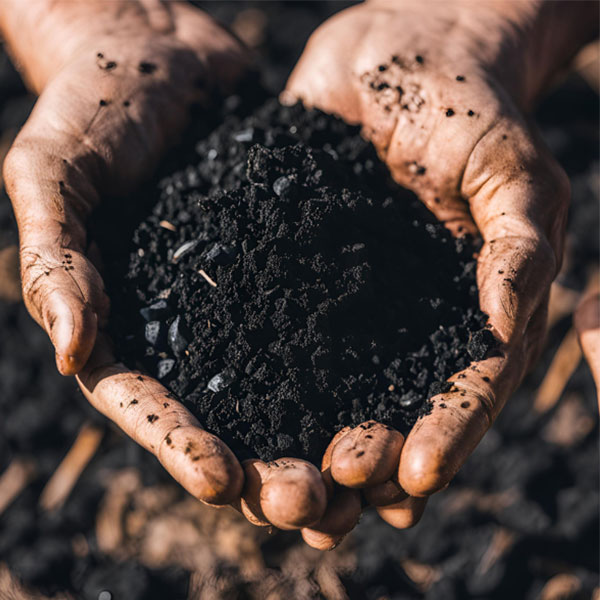
Wood Chips Pyrolysis Process
At low temperatures (200-300°C), the cellulose, hemicellulose, and lignin in the wood chips initially undergo dehydration. The wood chips begin to release water and a small amount of volatile organic compounds, gradually losing their toughness and beginning to carbonize.
As the temperature rises to 300-500°C, hemicellulose decomposes rapidly, producing large amounts of oxygenated compounds (such as acetic acid and methanol). Cellulose breaks down into short-chain carbohydrates, and the aromatic ring structure of lignin begins to disintegrate. Bio-oil and syngas production peaks at this point.
When the temperature exceeds 500°C, entering the high-temperature pyrolysis range, volatile components further decompose into small-molecule gases (such as hydrogen and methane). The remaining solid matter forms porous biochar, whose carbon content increases significantly with increasing temperature.
Wood Chips Pyrolysis Products
The wood pyrolysis products include biochar, syngas, and bio-oil. As a porous solid, biochar is not only an excellent soil conditioner but can also serve as an electrode material or carrier for carbon-based fertilizers, achieving the dual benefits of carbon sequestration + value-added utilization.
After purification, syngas (CO, H₂, CH₄) can be directly used for heating in the pyrolysis of wood chip. The phenolic and aldehyde compounds contained in bio-oil are valuable raw materials for fine chemicals.
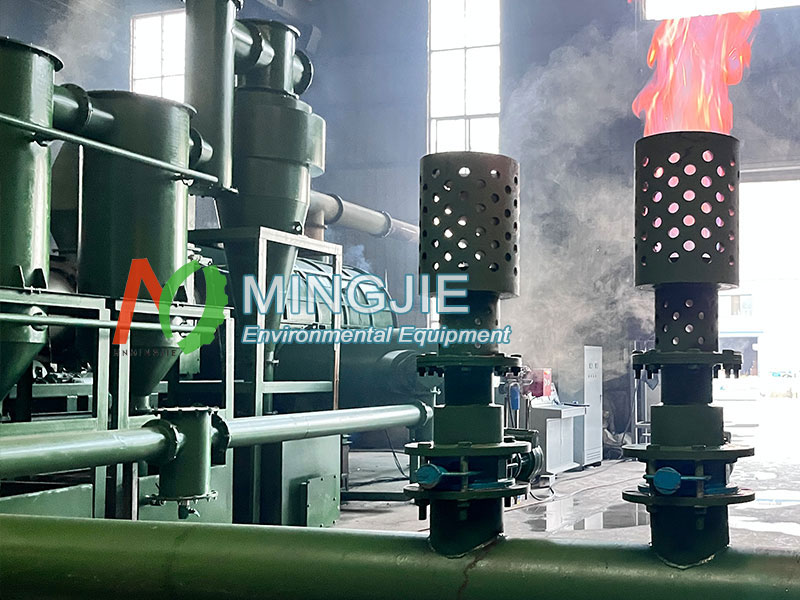
Development of Wood Pyrolysis Plant
Wood biomass to biochar making machine is making great strides toward becoming more efficient, environmentally friendly, and intelligent.
In the pyrolysis of wood chips, researchers are working to develop more advanced technologies to further improve pyrolysis efficiency and product quality. Multi-stage pyrolysis of wood chips has become a research hotspot. This process divides the pyrolysis process into multiple stages, specifically promoting the decomposition and conversion of different wood components under different temperature ranges and reaction conditions, thereby achieving precise control of the product.
Catalyst research and development is also a key direction for future technological innovation. Developing new and efficient catalysts will be key to improving pyrolysis reaction rates and product selectivity. Biochar inherently possesses certain catalytic activity and contains abundant functional groups on its surface. These interact with wood components, promoting the pyrolysis reaction.
Intelligent control technology will revolutionize the operation of wood pyrolysis plants. In biomass carbonization plant, intelligent control systems will collect and control key data, such as temperature, pressure, flow rate, and material composition in real time during the pyrolysis process. Intelligent control technology not only improves production efficiency and product quality, but also reduces labor costs. It reduces the impact of human factors on the production process while improving the safety and stability of biochar production.

